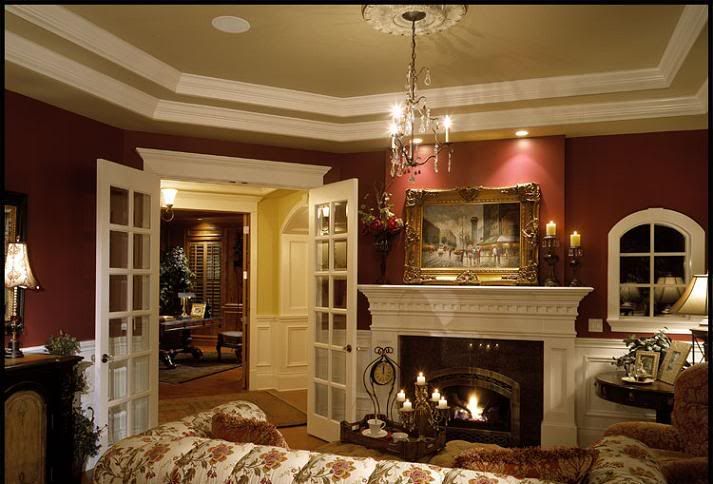Illustration: Anders Zorn. Dalecarlian Scene tapestry panel, 1909
Anders Zorn the Swedish fine art painter is probably better known outside of his native Sweden, as that of an accomplished and highly successful nineteenth and early twentieth century portrait painter. Zorn travelled widely in both Europe and North America and his portraits made him wealthy and acclaimed. However, as if a tonic for the often unrewarding profession of portrait painter, Zorn had a keen interest in the traditions of his native Sweden. The representation of both a rural and traditional basis of life in Sweden became more important to him as his life and career progressed, so that nearer the end of his life the subject of the traditions of Swedish life and culture became much more acute.
Zorn produced a number of compositions with subject matter that were based on the ordinary traditions of rural life in Sweden. These came in a number of disciplines, most admittedly within fine art painting, but some within the traditionally strong Swedish discipline of textiles. This was not particularly unusual for the period as many fine artists were keen to be seen as pan-discipline workers, producing efforts not only in textiles, but also that of ceramics, metal, glass and wood. That much of this work was art rather than design based did often limit the results, but it is still interesting to note the results of the process of a fine art sensibility being transposed into craft or design.
The examples shown here are relatively straightforward transpositions from a fine art origin to that of woven tapestry. Although there is no overly unique interpretation from Zorn, it is interesting to note how he has interpreted his compositions towards a textile based medium. The work has all the appearance of a graphic based dimension, with figures and backgrounds appearing both fresh and spontaneous, giving the impression of an element of contemporary vitality and spontaneity to the traditional rural scenes. Admittedly, this is not always the impression that has been immediately connected to either rural or traditional lifestyles, particularly by those of a more urban disposition.
Illustration: Anders Zorn. Dalecarlian Scene tapestry panel, 1909
All three tapestries are connected and should by rights be seen as a triptych of panels showing various aspects of the one theme. That theme was to illustrate the life lived in the Dalecarlian region of Sweden. Dalecarlia or Dalarna, is an area of the country that had become associated since at least the mid-nineteenth century as being in some respects, the heartland of both Sweden and its culture. The native Arts & Crafts movement was particularly interested in using Dalecarlia as a metaphor for all that was considered vital in preserving and prolonging the traditions of Swedish life.
Perceived heartlands were a particular necessity for a number of Arts & Crafts movements, more so in Europe than elsewhere. Specific regions and areas were often interpreted as literal vaults containing the uncontaminated traditions and root culture of a nation. Although much of this was clearly romantically misplaced sentiment, it does not change the fact that areas like Dalecarlia became the subject of intense retrospection and rich subject matter for a wide ranging list of creative individuals that included fine artists, designers, craftspeople, photographers, critics, musicians and writers.
These particular pieces by Zorn were even displayed at the 1909 Exhibition of Swedish Applied Art that took place in the capital, Stockholm. Zorn was not the only fine artist represented at the Exhibition, a number of popular and well-placed names in both Swedish fine art and design were represented such as Alfred Wallander, Carl Larsson and Gunnar Wennerberg. Zorn's tapestry work can be seen as a fine example of both the traditions of Swedish craft and culture, along with the sensibilities of a contemporary artist to those traditions.
Illustration: Anders Zorn. Dalecarlian Scene tapestry panel, 1909
Anyone interested in good selection of the fine art work produced by Zorn during his career might wish to follow the link to the Anders Zorn website which can be found below in the Reference links section, along with some relevant books on Zorn that can be found on Amazon.com.
Reference links:
Anders Zorn website
Anders Zorn
Anders Zorn Rediscovered
ANDERS ZORN, His Life and Work
Nationalism and the Nordic Imagination: Swedish Art of the 1890s
Greeting Cards: Anders Zorn Paintings
Anders Zorn In the Woods 19 1/2 x 15 1/2 Print
Anders Zorn 1860-1920: An Introduction to His Life and Achievements
The Prints of Anders Zorn
Anders Zorn
The Etchings of Anders Zorn: From the Collection of the Springfield Art Museum
Dagmar, 1911 Giclee Poster Print by Anders Leonard Zorn, 24x32





















No comments:
Post a Comment